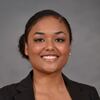This year's must-have back-to-school fashion accessory? A COVID-19 face mask. And some parents and teachers worry Portland Public Schools' bring-your-own-mask policy will further distinguish low-income kids from their more-affluent classmates.
David Scholten, a fifth grade teacher at Abernethy Elementary School, says face masks are "going to be another signifier of who has money and who doesn't."
"Other schools around the city who might have stronger PTAs and foundations are actually able to buy their students masks that they can reuse or masks of better quality," says Jaime Cale, who works in the front office at Rosa Parks Elementary School. "That's an equity concern of mine."
As with most other school supplies, K-12 students will be expected to bring their own face masks to school each day. Portland Public Schools will keep disposable masks on hand for students who don't.
For parents, that means masks are another school supply to worry about as in-person classes resume this month.
Kerri Melda has two children in PPS schools: one in middle school and one in high school. Their family of three has switched to using disposable masks and bought several boxes in bulk to last for months.
Before switching, they used cloth masks purchased from Old Navy—they liked the quality, and it was one of the most affordable options. "We had enough to where we could wash them once a week and use one per day," Melda says.
But that's not likely to be the case for students in poverty. They'll need to wash fewer reusable masks more often.
"You have to wash your reusable mask, and that's going to raise the bills," says Melda's 13-year-old daughter Sidisse, who attends Ockley Green Middle School. "I know some people might not have washing machines or don't have the money to run it multiple times a week."
Cale at Rosa Parks is already anticipating the conversations she's going to have with some students.
"There are some families that don't have a washing machine, and it's going to get to a point where we're going to have to tell kids they're going to have to wear a paper one anyway if it's soiled," Cale says. "That's not a fun conversation to have with kids."
Beyoung Yu, an English as a second language teacher at Rosa Parks, wonders if the staffing levels proposed in the district's reopening plan will be enough to keep replacement masks fully stocked.
"It's about having the person to put out the supplies or to refill the paper towels when they're empty or refill the soap dispensers, and when you're understaffed, those things always happen," Yu says.
In an attempt to gauge the disparity between the kids whose parents can spring for the good masks and those who have to make do with what schools provide, WW stopped by several Portland-area stores and priced the most expensive children's masks against the disposable ones. Here's a price comparison.
MOST EXPENSIVE $$$
Claire's kitty whiskers mask
Sold at: Claire's
Cost: $24.99
Cat and Jack cheetah print mask
Sold at: Target
Cost: $10 for a pack of three
BEST VALUE $$
Fair Haven Fashion Hygiene mask
Sold at: Ross
Cost: $7.99 for a pack of three
Orly masks
Sold at: Ross
Cost: $3.99 for a pack of three
Disposable N95 masks, which provide best protection from the virus
Sold at: Walmart, Green Zebra
Cost: $1 to $5
CHEAPEST $
Disposable blue medical grade paper masks
Sold at: Target, Walgreens, Fred Meyer
Cost: Less than 50 cents each when bought in bulk

